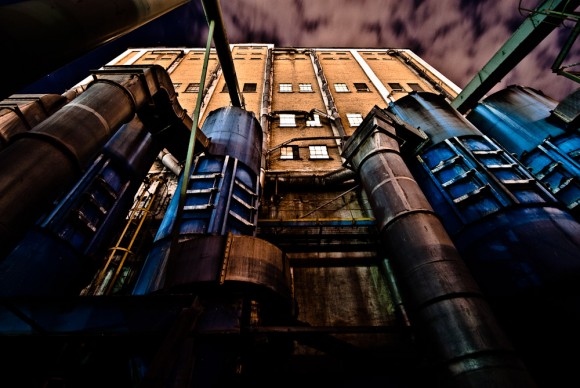No trespassing – amazing photos from urban explorers
It would be difficult for Edmonton’s urban explorers to stage a photography show, because so many of their best pictures are evidence of illegal activity.
For those who’ve never heard of urban exploring, it involves climbing chain link fences that have signs that say “No Admittance” or passing through doors that say “Authorized Personnel Only.” Urban explorers enter abandoned buildings through boarded-up windows and keep their eyes peeled for security guards.
In short, it’s trespassing. We can’t even tell you their real names.
Not all urban explorers take pictures — some just do it for the thrill of breaking the law. Others are taggers and their primary goal upon reaching a particularly inaccessible location is leaving their mark.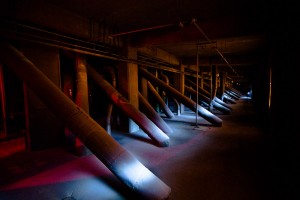
But for urban explorers who are also photographers, the results are some amazingly beautiful pieces that at the same time leave viewers with a strange, unsettling feeling.
“I’m just trying to document places people never see. It’s very sombre, it’s very quiet. Things are just sitting there,” says Rick, an Edmonton urban explorer and photographer.
“You pretend it’s post-apocalyptic and you’re scavenging for the last scrap of food,” he continues. “A lot of it is a rush — you’re not sure you’re going to get caught. And then you get home and you’ve got these great pictures.”
The photos depict once-grand, expensive and modern factories, homes, or entertainment facilities decaying, rusting, and rotting.
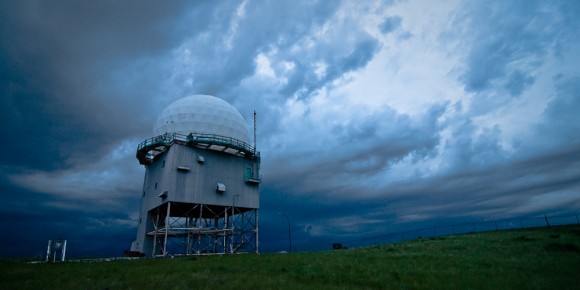 Rick’s pictures include several from an abandoned radar installation. One shows the facility’s white geodesic dome standing in contrast to an approaching thunderstorm. Another shot inside the dome depicts the turntable where the microwave transceiver sat, now abandoned and left to the mercy of vandals with spray cans.
Rick’s pictures include several from an abandoned radar installation. One shows the facility’s white geodesic dome standing in contrast to an approaching thunderstorm. Another shot inside the dome depicts the turntable where the microwave transceiver sat, now abandoned and left to the mercy of vandals with spray cans.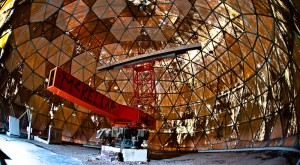
Andrew, another urban explorer in the city, took shots inside the Gem Theatre on Jasper Ave. before it was torn down last year. The rows of seats that were once new and full of people eager to see the latest in entertainment appear torn, moldy, and all but forgotten in the photos.
“If it’s going to be demolished soon, it adds something like a sense of tragedy,” says Andrew. “Here in Western Canada, things are transitory. It’s a way of showing that building at that moment in time.”
“If you take a picture of something, it’s like you’re preserving it.”
There are challenges to urban photography. Sometimes the environments are tight, so both Andrew and Rick need wide-angle lenses. And since entry to some of the locations is easier at night, many photos are taken in the dark.
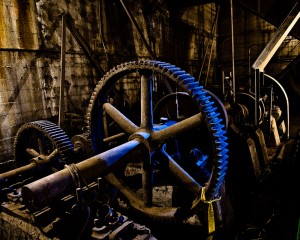 That’s tricky because flashes attract attention, so they have to do long exposures and stick with natural light. But that means they have to bring tripods, and tripods aren’t easy to run with if security guards or police show up.
That’s tricky because flashes attract attention, so they have to do long exposures and stick with natural light. But that means they have to bring tripods, and tripods aren’t easy to run with if security guards or police show up.
And there’s always safety concerns. Wooden floors may be rotton. Corners that are no longer lit may conceal dropoffs or equipment that can be tripped over.
But amid the decay is often startling beauty.
One of Rick’s pictures was taken in an abandoned water treatment facility. A friend of Rick’s is standing inside a giant tank that looks up at the open sky above, but the tank is so large and he is so far away that he is unidentifiable. Without him, it would be hard to get a sense of the sheer size of the tank.
Older buildings often have style that newer ones usually lack, notes Andrew. The Molson Brewery that’s under demolition on 104 St., for instance, has crinolations in the brickwork. It also has turrets, like a castle.
“They obviously took some time making it look attractive and a focal point,” Andrew says. “If Molson was going to be building a building today, it would be as cheap as it could be.”
“New buildings are very monotonous. I don’t know if it’s due to fire codes or what. In a new building, it’s just a fire escape. But in an old building, it might be a spiral staircase.”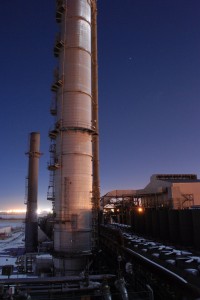
Not all of the empty buildings they enter are that old. One of Andrew’s favourite places to visit these days is a petrochemical facility east of Edmonton which shut in 2007. Built in the early 1950s and expanded through the decades, it employed 1,100 people at its peak in the 1990s.
And that may be a clue as to why some of the urban explorer photography is so unsettling. It’s not just that they remind us yesterday’s treasures are today’s trash — they evoke a realization that we will soon be tomorrow’s trash.
“It’s fascinating to see the quick change of seeing it go from this super-controlled place to quite easily seeing it one day going back to nature,” Andrew says of the plant.
Rick, meanwhile, calls his photos a study in decay, and says people sometimes mistake them as being from war-torn countries.
“It’s capturing the end of something — death,” he says.










